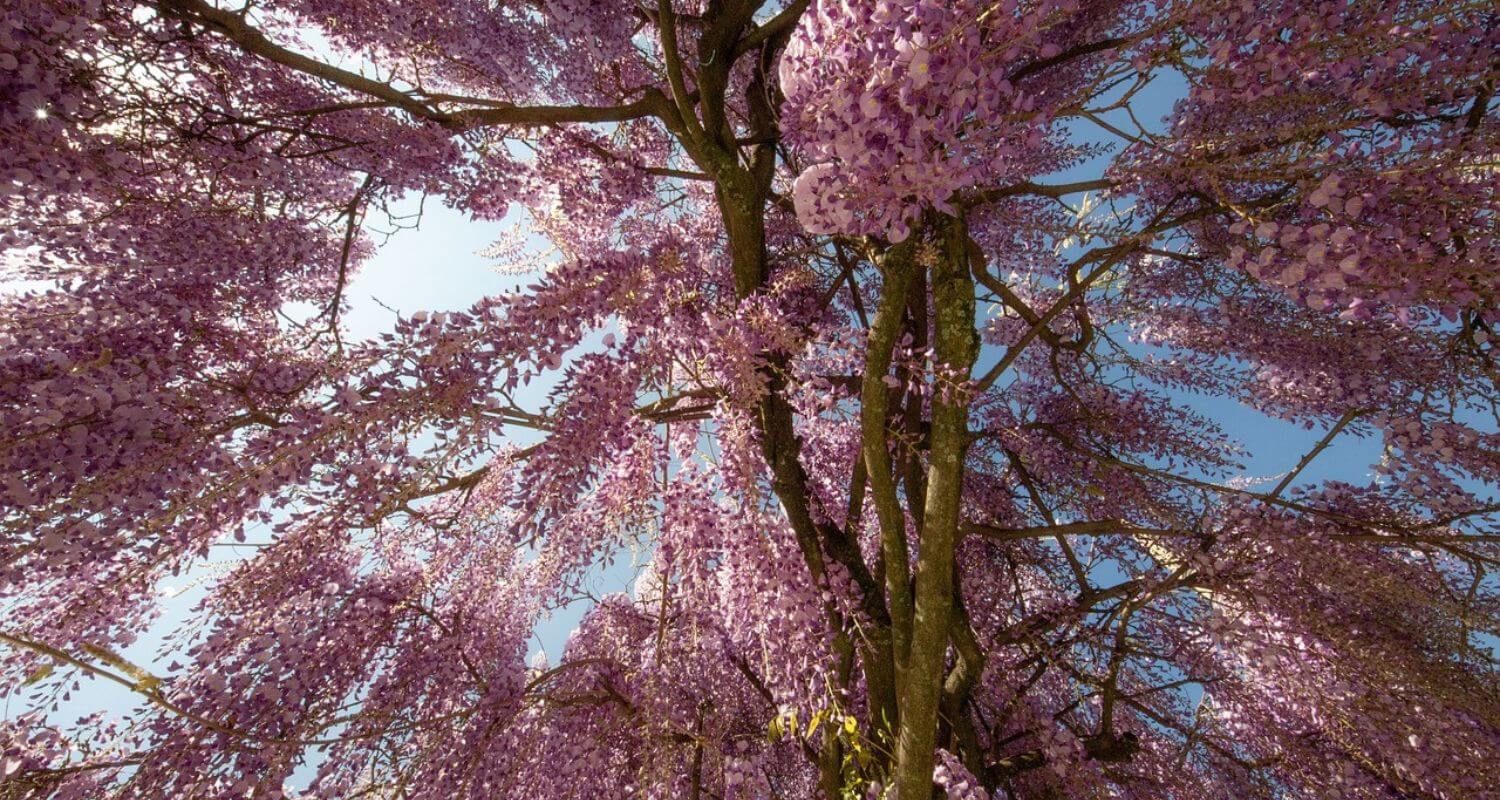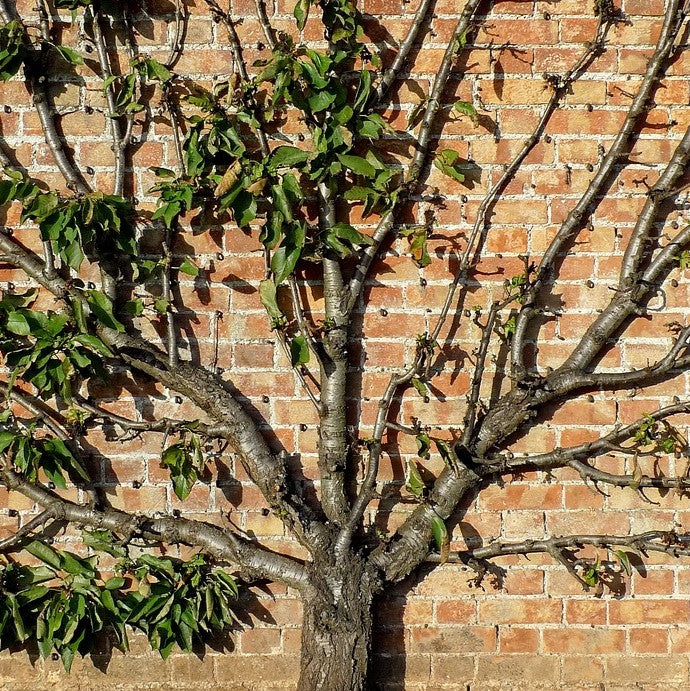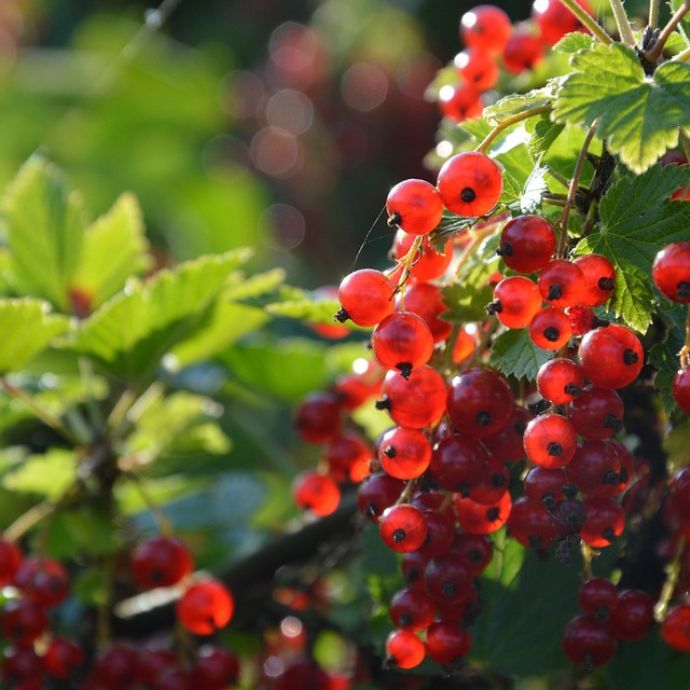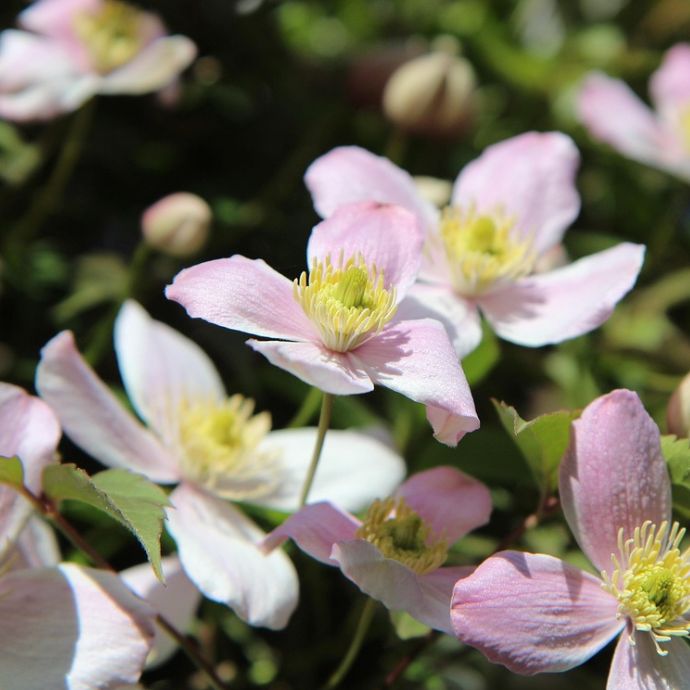Advice & Inspiration
Pruning Wisteria: An Expert Guide

If we were to carefully craft a dictionary for plants that might rival the OED, we’d probably say something like this for wisteria: “Wonderful, fabulous and utterly divine, wisteria is the climber no rustic garden should be without”. Putting literary pursuits aside for just a moment, however – because, let’s be real, the advent of a certain *cough* ‘Google’ *cough* has put paid to any chances of physical dictionaries ever making a stirring comeback – one thing is clear; wisteria is universally loved, and justly so.
But the secret to a wisteria that really turns the heads of passers-by, year after year? The sort that you’d find leafing through a Cotswolds picture book? Pruning. A properly pruned wisteria isn’t just a thing of great beauty, it’s also a healthier and more manageable plant, too. In this guide, we’ll walk you through the whys and hows of this important garden task, so grab your shears and secateurs, lather on the factor 50, and let’s get to it.
Jump to:
- Why you need to prune wisteria
- When you should prune wisteria
- Pruning wisteria in summer
- Pruning wisteria in winter
- Does pruning affect flowering
- The link between pruning and training
- The importance of sharp shears
Why pruning wisteria is so important
Wisteria plants are vigorous climbers, and if you don’t prune them they can quickly outgrow their allotted space. Wisteria sans pruning can become something of an unwieldy monster – though, admittedly, a very attractive one – so keeping on top of them is critical.
It isn’t just about keeping the plants to size, though, it can also help promote better flowering and keep your wisteria healthier. Pruning enables you to remove dead and damaged branches, improving air circulation (which helps prevent problems like mildew), and helps more light reach areas of newer growth, which in turn facilitates greater flower and foliage production. Winner, winner, wisteria dinner! Actually, that sounds pretty gross – too woody, by far…

When should you prune wisteria?
Wisteria plants should be pruned twice per year, once at the start of the year and once midway through. This helps keep growth in check and reduces the likelihood of your plant becoming overcrowded and unmanageable.
Pruning wisteria in summer (August)
Your horti-pop-cultural starter for ten: what does summer wisteria have in common with famed archaeological maverick, Indiana Jones? That’s right, whips! But whilst in Indy’s case, he uses his whip to tame miscreants, baddies and general ne'er do wells, with wisteria, it’s the whippy growth itself that must be tamed – plot twist, right?
You’ll see these long, straggly green shoots in summer, growing wildly out from their structure and just generally looking cocky and far too big for their organic boots. The solution? Cut them. Where? To around five buds in length. This improves airflow and allows more sunlight to reach the newer growth, helping it ripen in turn. This ripening then leads to greater bud development and, therefore, more flowers!
And that’s all you have to do in summer. Next, it’s onto the winter pruning.
Pruning wisteria in winter (February)
Remember that whippy growth you snipped back in the summer? That’s straight where we’re headed back to in the winter when your wisteria plant is dormant. Cut these stems back further to around two buds. Why? Well, there are two main reasons.
Firstly, to encourage the formation of spurs (where the flowers are produced) and bigger flower buds which in turn produce bigger blooms. And secondly, just to keep the plant nice and tidy – sometimes, pruning really is as simple as keeping your plant looking tidy.
The same pruning methods can be applied if you’re training your wisteria to grow as a tree. Trimming away new growth at the base of the trunk is particularly important in this instance as you’re trying to develop that thick, central leader.
This new growth will look like suckers either growing from the trunk itself or even out of the ground. Unlike the other shoots, where you’re cutting back to a bud, for these shoots near ground level, you’ll want to prune right back to the trunk, itself.

Does pruning wisteria affect flowering?
Yes! Pruning your wisteria is critical to ensure good flowering. The pruning you carry out in winter helps prepare the plant for flowering, and if you don’t properly prune your plant, then the spurs we mentioned earlier might not form properly on the older wood, and growth might be focused on foliage rather than flowers.

How pruning wisteria ties into training
Training your wisteria properly is just as important as pruning when it comes to keeping your plant happy, healthy and long-lived. And it’s fair to say that the two feed off one another; a well-pruned wisteria, for instance, is tamer and therefore easier to train. Conversely, a properly trained wisteria is more accessible, easier to reach and generally just simpler to prune.

Use sharp shears or secateurs for optimal pruning
The first tip is to make sure your secateurs or pruning shears are nice and sharp. If they’ve not seen much use recently, or they seem a bit dull, then sharpen them by doing the following:
Step 1: Clean the blades
Before you get round to sharpening, you need to make sure the blades are clean. For most general dirt, a wash with soap and water will suffice, but if there’s anything more baked-on, then a coarser wire brush can be used.
Step 2: Sharpen the blades
Using a diamond-coated file or sharpening steel, make steady movements with the tool away from your body against the cutting edge of the secateurs, repeating until the blade is looking keen as a samurai’s katana. Remember to wear gloves whilst doing this – nobody wants an unexpected trip to the emergency room after all…

Final thoughts
So, there you have it – all you need to know about pruning wisteria. Schedule some time in the diary so that you don’t forget about it, and you’ll be left with a plant that rewards you with better flowers, and let’s be real, that’s what we all grow wisteria for! Say goodbye to those whippy summer shoots and hello, instead, to glorious flowing flower sprays.


















